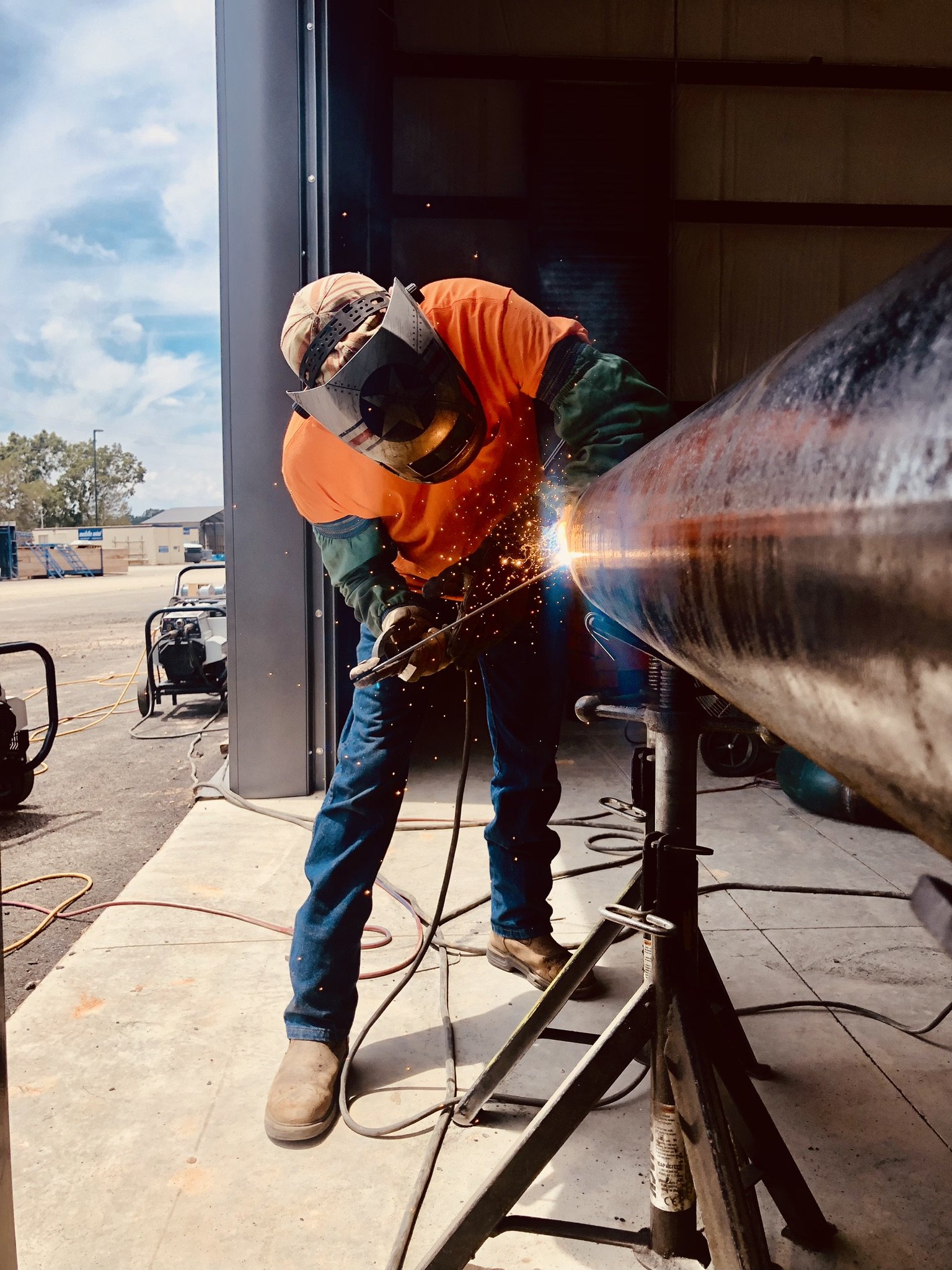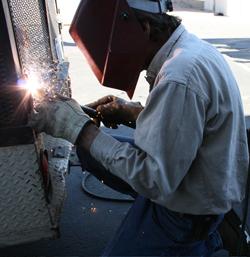Typical Welding Fixing Issues and How to Address Them Efficiently
Welding repair services typically experience a variety of concerns that can jeopardize the honesty of the last item. Common problems include poor penetration, porosity, and misalignment, amongst others. Each flaw offers distinct obstacles that call for certain approaches for resolution. Recognizing these concerns is vital for welders intending to boost their end results and abilities. This discussion will certainly discover these typical welding repair concerns and effective techniques to address them.
Poor Infiltration
Inadequate infiltration occurs when the weld steel fails to completely fuse with the base material, resulting in weak joints and potential structural failures. This concern typically comes from insufficient heat input, wrong electrode angle, or incorrect welding speed. Welders may experience poor penetration as a result of a mistake of the required criteria for a specific material thickness or type. Additionally, contamination on the base product's surface area can hinder reliable bonding, worsening the issue. To resolve poor penetration, welders ought to guarantee appropriate setups on their tools and keep a clean work surface. Normal evaluation of welds is recommended to determine any shortages early, allowing for prompt adjustments and the avoidance of endangered structural honesty in welded settings up.
Porosity
Porosity is a typical defect in welded joints that manifests as small gas bubbles entraped within the weld steel. This issue can compromise the honesty of the weld, bring about decreased toughness and possible failing under stress. Montana Mobile Welding and Repair Belgrade Welding. Porosity commonly arises from contamination, dampness, or improper welding strategies, which enable gases to leave right into the liquified weld swimming pool. To address porosity, welders should guarantee proper surface area prep work, maintain a tidy workplace, and use suitable welding criteria. Additionally, selecting the right filler material and protecting gas can reduce gas entrapment. Normal evaluation and testing of welds can aid recognize porosity early, guaranteeing prompt corrective actions are taken, thereby preserving the top quality and integrity of the bonded framework
Imbalance
Misalignment in welding can emerge from numerous factors, consisting of incorrect arrangement and thermal development. Comprehending the origin is vital for reliable resolution. Several modification strategies are available to straighten components and assure structural stability.
Sources of Misalignment
Welding imbalance often originates from a range of underlying concerns that can compromise structural integrity. One primary cause is improper fit-up of parts before welding, which can bring about spaces and unequal surfaces. Variations in thermal expansion throughout the welding process can also cause distortion, particularly if the materials being joined have different coefficients of expansion. Furthermore, inadequate clamping and fixturing may fall short to hold components securely in position, resulting in activity during welding. Poorly maintained devices, including welding devices and tools, might introduce incongruities in the weld grain, additional adding to imbalance. Driver error, stemming from not enough training or experience, can also play a considerable role in creating misaligned welds.

Adjustment Methods Readily Available
Dealing with misalignment properly calls for a mix of corrective techniques tailored to the details concerns handy. One typical approach is making use of fixtures or jigs to hold elements in the appropriate setting throughout welding, ensuring regular positioning. Furthermore, pre-heating the products can help in reducing distortion and boost fit-up. For significant misalignment, mechanical realignment methods, such as utilizing hydraulic jacks or clamps, can be employed to deal with the position before welding. Post-weld warm therapy might additionally be needed to relieve tensions brought on by imbalance. Careful assessment and modification during the setup phase can stop misalignment concerns from ending up being considerable troubles, advertising a smoother welding process and improving general structural integrity.
Distortion
Distortion is a common obstacle in welding that can emerge from various aspects, consisting of uneven cooling and heating. Comprehending the reasons for distortion is important for carrying out efficient prevention strategies. Resolving this problem not just boosts architectural honesty yet also boosts the general high quality of the weld.
Reasons for Distortion
When based on the intense warmth of welding, products typically undertake modifications that can result in distortion. This phenomenon largely develops from thermal development and contraction during the welding process. As the weld area warms up, the material expands; upon air conditioning, it acquires, which can create internal stress and anxieties. On top of that, unequal heating across a workpiece can worsen these anxieties, leading to bending or flexing. The kind of product also plays a considerable duty; metals with varying thermal conductivity and coefficients of expansion may react in different ways, resulting in unpredictable distortions. Bad joint style and inadequate fixturing can add to misalignment during welding, increasing the likelihood of distortion. Understanding these causes is necessary for efficient welding repair work and prevention approaches.
Prevention Techniques
Reliable prevention strategies for distortion throughout welding focus on regulating warmth input and ensuring proper joint design. Maintaining a regular warmth input helps to lessen thermal development and tightening, which can lead to distortion. Making use of methods such as preheating the work surface can likewise decrease the temperature level gradient, advertising uniform home heating. Furthermore, picking appropriate joint designs, such as T-joints or lap joints, can improve security and minimize tension concentrations. Carrying out correct fixturing to safeguard the work surfaces in position better aids in keeping placement during the welding process. Finally, staggered welding argon tanks series can disperse warmth a lot more equally, stopping localized distortion. By using these approaches, welders can greatly reduce the likelihood of distortion and boost the general high quality of their welds.
Fracturing
Fracturing is a common issue experienced in welding repair services, often resulting from various variables such as incorrect cooling rates, product selection, or poor joint prep work. The occurrence of fractures can substantially compromise the stability of the weld, resulting in possible failures during operation. To resolve this concern, welders have to initially analyze the origin, making sure that materials are suitable and suitably selected for the details application. Furthermore, controlling the air conditioning rate throughout the welding procedure is vital; fast air conditioning can cause anxiety and result in cracking. Correct joint style and preparation likewise add to lessening the threat. Carrying out these techniques can boost weld top quality and durability, eventually minimizing the likelihood of fracturing in ended up weldments.

Insufficient Combination
A substantial issue in welding repair services is insufficient fusion, which happens when the weld metal does not appropriately bond with the base material or previous weld passes - Montana Mobile Welding and Repair Belgrade Welding. This flaw can cause weaknesses in the joint, potentially endangering the integrity of the welded structure. Factors adding to insufficient fusion consist of inadequate warm input, improper welding method, and contamination of the surface areas being signed up with. To address this problem successfully, welders ought to guarantee proper pre-weld cleansing and surface area preparation, in addition to readjust their welding parameters to achieve sufficient infiltration and fusion. Normal assessment throughout the welding procedure can also assist identify incomplete blend early, enabling prompt corrective useful site measures to improve the general top quality of the weld
Overheating
While welding repairs can enhance structural integrity, overheating offers a considerable challenge that can lead to product deterioration. Extreme warm during welding can change the mechanical properties of metals, leading to minimized strength, boosted brittleness, and warping. This phenomenon is particularly critical in high-stress applications where architectural integrity is paramount. Identifying getting too hot can involve aesthetic evaluations for staining or distortion, in addition to keeping track of temperature during the welding process. To alleviate the risks linked with overheating, welders should employ proper methods, such as regulating heat input, readjusting traveling speed, and utilizing ideal filler products. Furthermore, executing pre- and post-weld heat treatments can aid recover product residential or commercial properties and enhance the total top quality of the repair work, ensuring long-lasting efficiency and safety and security.
Frequently Asked Concerns
What Are the Typical Indications of a Welding Problem?

Just How Can I Examine My Welds for High quality?
To check welds for high quality, one can use aesthetic evaluations, ultrasonic testing, and radiographic techniques. Each technique ensures structural integrity, identifies defects, and confirms adherence to defined criteria, ultimately boosting the dependability of the welded joints.
What Security Precautions Should I Take While Welding?
When welding, one must focus on safety by using ideal individual protective equipment, guaranteeing proper ventilation, securing combustible materials away, preserving a clean work area, and recognizing surroundings to stop injuries and accidents.
Can I Fix a Weld Without Redesigning the Entire Joint?
Repairing a weld without redesigning the entire joint is possible, relying on the damages (Belgrade Fabrication). Methods such as grinding, including filler material, or that site using a welding procedure can effectively resolve certain defects while preserving the bordering framework
What Equipment Are Essential for Effective Welding Services?
Necessary tools for reliable welding repairs consist of a welding device, cable brush, mill, protective equipment, clamps, and filler materials. Each tool plays a vital function in ensuring high quality and safety during the repair work process. Porosity generally occurs from contamination, wetness, or inappropriate welding techniques, which allow gases to get away right into the molten weld pool. Improperly conserved equipment, including welding makers and tools, might present disparities in the weld grain, more contributing to imbalance. When subjected to the intense warmth of welding, materials usually undergo modifications that can lead to distortion. Fracturing is an usual concern encountered in welding repair work, frequently resulting from various aspects such as inappropriate air conditioning rates, material option, or inadequate joint prep work. A considerable problem in welding fixings is insufficient fusion, which happens when the weld metal does not appropriately bond with the base product or previous weld passes.